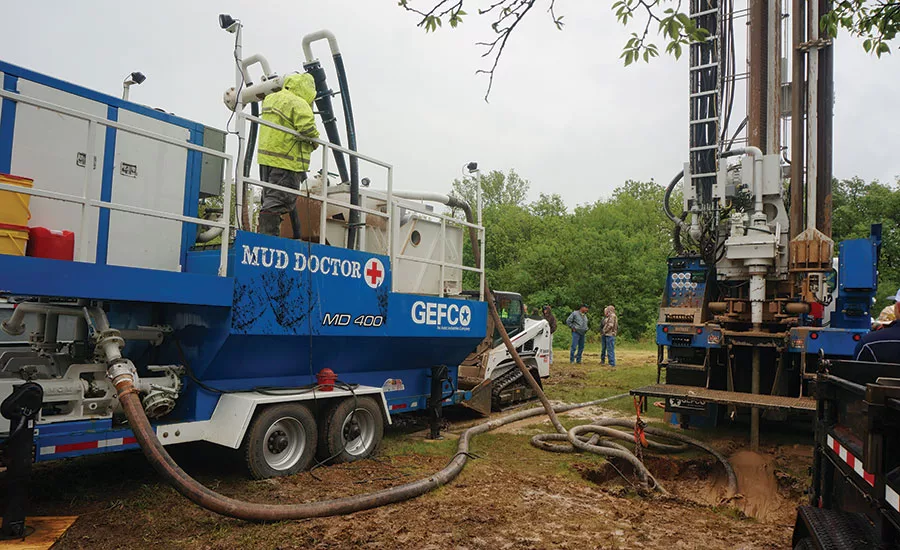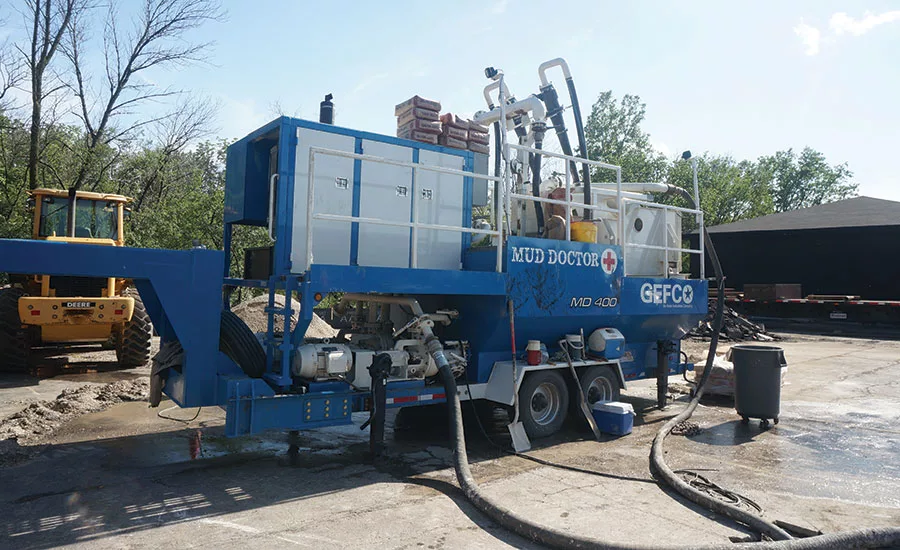How Do I Become a Driller?

The climb from helper to driller isn’t necessarily easy, but when you get there the apprentices under you will appreciate their own hand up when the time comes. Source: Brock Yordy

As a driller’s helper, make it a goal to understand everything about the drilling fluids system your company uses. Talk to mud engineers about your local geology. Source: Brock Yordy photos

An apprentice should familiarize himself with prestart checks, setup and tear down, and learn everything there is to know the functions of the drill.

It’s important to take note at each job of what went right and what went wrong.
My advice is to buy your own drill and support equipment; there, you are now a driller.
But, it is not that simple. What does it take to become a competent driller? How many seasons does it take to teach a man or woman to be able to operate a drill rig, complete a well and bring everyone home safely? There is no set amount of years of experience to become a competent driller. However, if we look at our industry there are more mid- to late 50-year-old drillers than late 20-year-old drillers.
Steps up to Becoming a Driller:
In July, I turn 36 years old, which means I have spent 18 years as a driller. All the years before that I shoveled mud pans, hand threaded pipe, went into crawlspaces I never thought I would have fit in and pushed waterlogged tanks up basement stairs. If I could go back in time, this is the advice I would give my 18-year-old self about becoming a driller.
National Driller's Helper
The first weeks on the job will be overwhelming and some of the hardest work you will ever do. But the first time you get to help bring water out of the ground it immediately becomes the greatest job on earth. My friend Dave Bowers, drill trainer for the 150 Operators Union, starts his pre-apprentice/helpers class with these words of encouragement: “Your job is to keep the driller on the rig platform drilling.” Dave is right. The driller needs to concentrate on drilling while the helper takes care of the support functions of the drilling process.
This is my order of priority for support functions as a driller helper:
- Safety
- Maintaining drilling fluids volume and properties
- Collecting cutting samples
- Physical or mechanical solids control
- Rod handling
- Tool keeper
There is always time for safety. Wear the proper protective equipment: Save your back, lungs and ears. Drilling fluids can have the greatest impact on completing a borehole successfully. As a helper, it is your job to understand everything about your drilling fluid system. Always know how much water is in the water truck. Understand the direct impact a drill mud’s viscosity and weight can have on your area’s geology. Talk to your local mud engineer and build a fluids program that works for your geology.
Collecting and properly identifying soils samples will help you understand how different geologies react to a drilling fluid. Also, the ability to identify the different types of formations will help you determine water production zones as a future driller. Solids identification will be easy because you will be the physical solids control, removing the drill cuttings from an earthen pit or mud pan. If you are lucky enough to have a mechanical solids control unit to remove the solids, learn everything you can about the manufacturer recommended procedures. Your job is to maintain a low-solids drilling fluid regardless of physical or mechanical method. My solids control advice for my 18-year-old self is to set a threshold of 8.8 ppg with a sand content of 1 percent or less. An 8.8 ppg threshold can be fixed. At 9.0 ppg and higher, it will have to be pumped off.
A helper also needs to be ready to help with rod handling. You should time your other tasks around when the driller needs you up on the helper’s platform. A helper should always anticipate what the driller will need next, keeping an organized layout of the tools required for each task. After a few months, you will get into a rhythm with your driller and the process will become easier.
Driller's Apprentice
Drilling is a disruptive process that rarely goes as planned. As an apprentice, focus on the processes that do not change, such as prestart check, setup and tear down. Learn everything you can about the functions of the drill. As an apprentice, you are preparing yourself to be a driller in the future. My big advice is to keep a notebook of how each support function is effective during the drilling process. You will make apprentice status by learning from your mistakes. Constantly ask questions and reflect upon how the job finished. In 18 years, my notebook has sections on:
- Formation identification
- Rig operation and penetration rate
- Bit selection and cutting action
- Near misses
An apprentice has to think like a helper and a driller. Thinking like a driller starts with understanding your geological formations. A driller can identify formation change by the sound of the rig, the chatter of the bit, the color change of the mud, vibration of the rig platform, and many other nuances. As an apprentice, talk to your driller about these changes and start to identify them on your own. When you see a change, collect cutting samples to understand what you just saw or heard to strengthen your knowledge. Compare your thoughts with the driller and learn the rhythm of the drilling process. Watch how the driller changes the rig’s operation to improve penetration rate or smooth out drilling. Take note of the cutting shape and size creation that occurs when the driller changes the rotation speed or feed rate. Proper bit selection will create manageable cuttings that are easily removed from the borehole. Discuss drill bit selection with your driller and bit manufacturer to understand cutting actions and bit life.
The most valuable section of my journal is the “near miss” section. Anytime I witness or have been part of an accident, I remember to make note of it. Every near miss or minor accident is one step closer to a major incident. Near misses lead to you or a coworker being dismembered or possibly killed. At the end of the day, always ask what went wrong and how can we prevent it. It is your job to help make the disruptive process go as planned; you can do that by referencing your notebooks. Being prepared builds your confidence and your company’s trust in you to be a driller.
National Driller
Once you have filled your notebook, start another one. Never stop learning or questioning what happened on good jobs and bad. Understand that it is your job to keep everyone on the jobsite safe.
Your next step might be to get licensed or certified. Remember that there are endless resources available to further your drilling education. Sign up for drill schools and continuing education courses. There is nothing more valuable than on-the-job training, except when you can share your experiences with others at a drill school. Give your association the feedback to bring in the topics that would be beneficial to you and your company. Challenge the trainers to update their lessons with relevant topics.
Finally, become a trainer and mentor to the next generation of drillers. The next time you are drilling, and the job isn’t going as planned, what do you do? Do you start yelling, creating a worse situation? Or do you slow down the situation, make a plan and solve the problem? Every bad drilling situation is a teachable lesson. It is the perfect moment to teach your helper or apprentice how to problem solve under pressure. In the future, your helper might be the driller under pressure, and he or she will remember that moment and pass on that same knowledge. My mentor taught me, “Nothing is nearly as bad as it seems or nearly as good as it seems. It’s just drilling.”
Looking for a reprint of this article?
From high-res PDFs to custom plaques, order your copy today!




